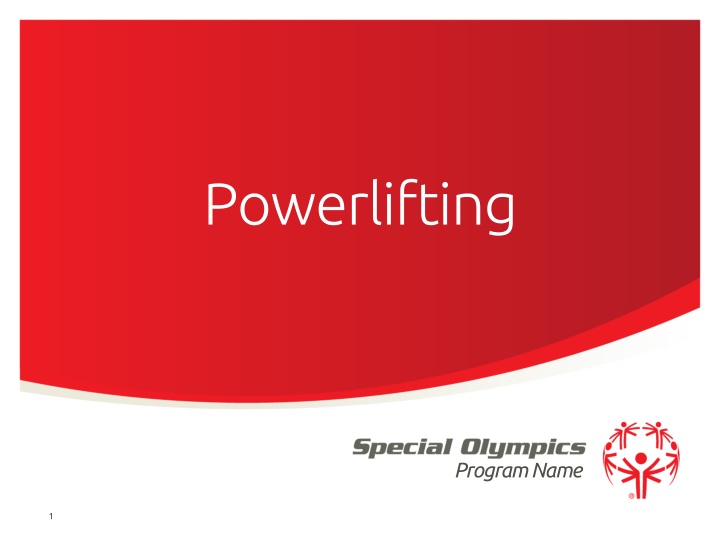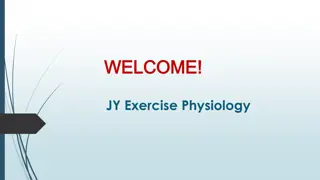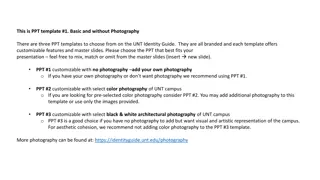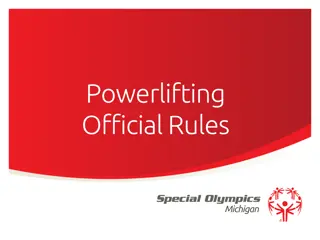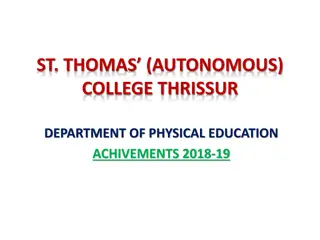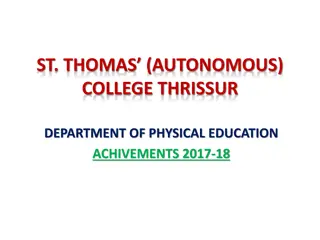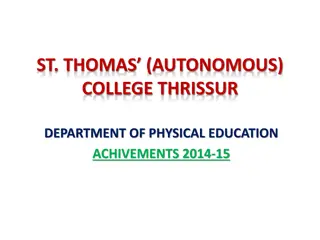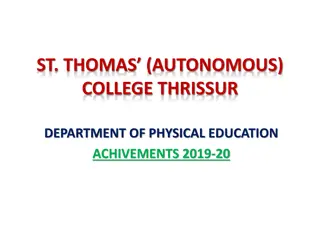Powerlifting Program Overview
Powerlifting program information including the Special Olympics oath, event details, uniform requirements, and general rules for participants. Covering aspects such as preferred uniform, equipment specifications, certification requirements for coaches, and scoring rules.
Download Presentation

Please find below an Image/Link to download the presentation.
The content on the website is provided AS IS for your information and personal use only. It may not be sold, licensed, or shared on other websites without obtaining consent from the author.If you encounter any issues during the download, it is possible that the publisher has removed the file from their server.
You are allowed to download the files provided on this website for personal or commercial use, subject to the condition that they are used lawfully. All files are the property of their respective owners.
The content on the website is provided AS IS for your information and personal use only. It may not be sold, licensed, or shared on other websites without obtaining consent from the author.
E N D
Presentation Transcript
Powerlifting Program Name 1
Let me win, but if I cannot win, let me be brave in the attempt. -Special Olympics Oath 2
The Basics Sport season: February - June Culminating State Events: State Summer Games 3 / Special Olympics Program Name
Events Offered Squat Bench Deadlift 2 Lift Combination (Bench, & Dead Lift) 3 Lift Combination (Squat, Bench & Dead Lift) 4
Uniform Program Name 5
Powerlifting Uniform Preferred Uniform: The preferred uniform is a one- piece singlet, which is close fitting, collarless, and does not cover the knees. Uniform can be any color. A T-shirt may be worn under the one-piece. Footgear long socks (up to the knee) must be worn for the Deadlift. Wraps: wrist wraps of a maximum width of 8 centimeters and maximum length of 1 meter may be worn. A wrist wrap shall not extend beyond 10 centimeters above or 2 centimeters below the center of the wrist. 6
Powerlifting Uniform Cont. Knee wrap wraps not exceeding 2 meters in length and 8 cm in width may be used. Belt: A belt made of leather, vinyl or similar nonstretch material may be worn on the outside of the suit. The belt dimensions should be not more than 4 inches at its greatest width and with a thickness not exceeding .5 inches. No gloves are allowed. If a lifter, after the referee's inspection, changes part of his/her uniform, belt, or bandages, or puts on anything that has not been authorized or is contrary to the rules, he/she shall immediately be disqualified. 7
General Rules Program Name 8
General Rules No athlete will be allowed to participate in power lifting events without a certified coach. An athlete's score for a lifting event will be the maximum amount that was successfully lifted during that event. The score for a combination event will be the sum of the maximum successfully completed lifts. There may be an opportunity for the athlete to try a "personal best" lift at the State Summer Games competition. A personal best attempt is performed after the official results have been recorded. 9
Bar and Disc Specifications Distance between collars: 1m 31 cm (4' 3 Distance between collars: 1m 31 cm (4' 3- - 1/2") at a maximum. 1/2") at a maximum. Total length outside the sleeves: 2 m 20 cm (7' 2 Total length outside the sleeves: 2 m 20 cm (7' 2- -3/4") at a maximum. maximum. 3/4") at a Diameter of the bar: 28 mm (1 Diameter of the bar: 28 mm (1- -7/8") minimum; 29 mm (1' 1 3/16") maximum. 3/16") maximum. 7/8") minimum; 29 mm (1' 1- - Diameter of the largest disc: 45 cm (1' 5 Diameter of the largest disc: 45 cm (1' 5- - 3/4"). 3/4"). Weight of the largest disc: 45 kg (99 lbs.). Weight of the largest disc: 45 kg (99 lbs.). Weight of the largest bar and collars: 25 kg (55 lbs.). Weight of the largest bar and collars: 25 kg (55 lbs.). The discs must be in the following range: 45 kg. (99 lbs.), 25 kg. The discs must be in the following range: 45 kg. (99 lbs.), 25 kg. (55 lbs.), 20 kg. (44 lbs.), 15 kg. (33 lbs.), 10 kg. (22 lbs.), 5 kg. (11 (55 lbs.), 20 kg. (44 lbs.), 15 kg. (33 lbs.), 10 kg. (22 lbs.), 5 kg. (11 lbs.), 2.5 kg. (5.5 lbs.), 1.25 kg. (2.5 lbs.) lbs.), 2.5 kg. (5.5 lbs.), 1.25 kg. (2.5 lbs.) 10
Divisions Athletes shall be placed in divisions according to gender, age, ability and weight class. Weight Class Men Weight Class Women 1) 53 kg (111 lbs.) 1) 43 kg (95.75 lbs.) 2) 59 kg (130 lbs.) 2) 47 kg (103 lbs.) 3) 66 kg (145.5 lbs.) 3) 52 kg (114.50 lbs.) 4) 74 kg (163 lbs.) 4) 57 kg (125.50 lbs.) 5) 83 kg (183 lbs.) 5) 63 kg (139 lbs.) 6) 93 kg (205 lbs.) 6) 72 kg (158.5 lbs.) 7) 105 kg (231 lbs.) 7) 84 kg (185 lbs.) 8) 120 kg (264.5 lbs.) 8) 84+ kg (185.25 or more lbs.) 9) 120+ kg (264.75 or more lbs.) 11
Weigh - In Before trials and finals, the weigh-in of competitors must take place 1 hour and 15 minutes before the beginning of competition for a particular category. Lifters will be divided into flights of no more than fifteen lifters, which will be divided into divisions of no less than three and no more than eight lifters. The Wilkes formula (WF) is presented in kilograms as a table of coefficients. Each lifter has a coefficient determined by body weight (BW). 12
Squat The lifter shall assume an upright position with the top of the bar not more than 3 cm below the top surface of the anterior deltoids. The bar shall be held horizontally across the shoulders with the hands and fingers gripping the bar (not the collars) and the feet flat on the platform with the knees locked. After removing the bar from the racks, the lifters must move backwards to establish their position. The lifter shall wait in this position for the chief referee's signal. The lifter must recover at will without double bouncing or any downward movement after starting up to an upright position with the knees locked. 13
Squat Cont. The signal to replace the bar will consist of a backward motion of the hand and an audible command to "rack. The lifter shall not hold the collars, sleeves, or discs at any time during the performance of the lift. The lifter may enlist the help of the spotter/loaders in removing the bar and replacing it in the racks; however, once the bar has cleared the racks, spotter/loaders shall not assist the lifter further with regard to proper positioning, foot placement, bar positioning, etc. 14
Bench Press The lifter must assume the following position on the bench and maintain this position during the lift: the head, trunk (including buttocks) must be extended on the bench, and the feet must be on the floor. The referee's signal shall be given when the bar is absolutely motionless at the chest. Athletes who are anatomically unable to fully lock out a bench press must have a certified coach state so at the weigh-in. A medical certificate should accompany the request. No changes in proper lifting techniques can be made for the lifter after weigh-in. 15
Dead Lift The bar must be laid horizontally in front of the lifter's feet, gripped with both hands, and uplifted with one continuous motion until the lifter is standing erect. At completion of the lift, the knees must be locked and the shoulders thrust back. On completion of the lift, the knees shall be locked in the straight position, and they should be held in an erect position (not forward or rounded). The shoulders do not have to be thrust back past an erect position; however, if they are thrust back in that manner, and all other criteria is acceptable, the lift shall be accepted. 16
Thank you. Program Name 17
